Basics of Eco-Friendly Beekeeping for Beginners
Are you ready to dive into the buzzing world of eco-friendly beekeeping? This article introduces you to the fundamental principles and practices that will not only help you maintain healthy bee populations but also support the environment. As a beginner, you might feel overwhelmed by the vast amount of information out there, but fear not! We're here to guide you through the essentials, making sure you feel confident and excited about your new hobby. Think of beekeeping as a dance with nature, where every step you take helps both you and the bees thrive together.
First off, let’s talk about why bees are so important. These little creatures are not just responsible for producing honey; they play a crucial role in pollination, which is vital for the production of many fruits, vegetables, and nuts. Without bees, our food systems would be in serious trouble! By practicing eco-friendly beekeeping, you contribute to biodiversity and help combat the decline of bee populations caused by various environmental factors.
Now, you might be wondering, "What do I need to get started?" Choosing the right beekeeping equipment is essential for your success. From beehives to protective gear, having the appropriate tools will make your beekeeping journey much smoother. But don’t worry; we’ll focus on eco-friendly options that prioritize the health of your bees and the environment. Remember, every choice you make can either help or hinder your little buzzing friends!
As we explore different types of beehives, you’ll discover that there are various designs to choose from. For beginners, two popular options are the Top-Bar Hive and the Langstroth Hive. Top-bar hives are particularly favored for sustainable beekeeping due to their alignment with natural bee behavior, allowing bees to build their comb in a more organic manner. On the other hand, Langstroth hives are widely used in commercial beekeeping, but they come with their own set of advantages and drawbacks. Understanding these differences will help you make an informed decision that aligns with your eco-friendly goals.
Once you have your hive set up, it’s time to adopt essential beekeeping practices. These practices are crucial for maintaining healthy colonies and include organic pest management and habitat preservation. By implementing these sustainable methods, you not only ensure the well-being of your bees but also contribute to a healthier ecosystem.
As you embark on this journey, familiarizing yourself with bee behavior is key. Understanding the social structure of a bee colony—comprising the queen, workers, and drones—will enhance your ability to manage your hive effectively. Each member plays a vital role in the health of the hive, and knowing their functions will help you recognize any issues that may arise.
Foraging is another fascinating aspect of bee behavior. Bees collect nectar and pollen from flowers, which is essential for honey production and pollination. By planting diverse flora in your garden, you can create an inviting environment for your bees, ensuring they have plenty of resources to thrive.
When it comes to harvesting honey, it's important to do so sustainably. Knowing when and how to extract honey is crucial for maintaining colony health. After all, your goal is to enjoy the fruits of your labor without compromising the well-being of your bees. Post-harvest management is equally important; ensuring that your hive remains strong and healthy after honey extraction will set the stage for future seasons of successful beekeeping.
Of course, challenges may arise in your eco-friendly beekeeping journey. From pests to diseases, being prepared for these obstacles is essential for maintaining a healthy hive. Implementing eco-friendly pest management strategies and understanding common bee diseases will empower you to protect your bees sustainably.
Finally, connecting with local beekeeping communities and resources can greatly enhance your knowledge and experience. Joining local beekeeping associations provides valuable networking opportunities and access to experienced beekeepers. Additionally, online learning platforms offer flexible options for continuous education, helping you stay updated on the latest sustainable practices.
1. What is eco-friendly beekeeping?
Eco-friendly beekeeping focuses on sustainable practices that promote the health of bee populations and the environment. This includes using organic methods for pest control and choosing equipment that minimizes harm to bees.
2. Do I need a lot of space to keep bees?
Not necessarily! Many beekeepers successfully manage hives in small backyards or even on balconies. Just ensure that the location provides adequate sunlight and access to flowering plants.
3. How can I help my bees thrive?
Planting a variety of flowers, avoiding pesticides, and providing a clean water source can significantly help your bees thrive. Regular hive inspections and maintaining a healthy colony are also crucial.
4. Is beekeeping expensive?
While there are initial costs for equipment and bees, many beekeepers find it to be a rewarding investment. Over time, your bees can produce honey, which can offset some of the costs.
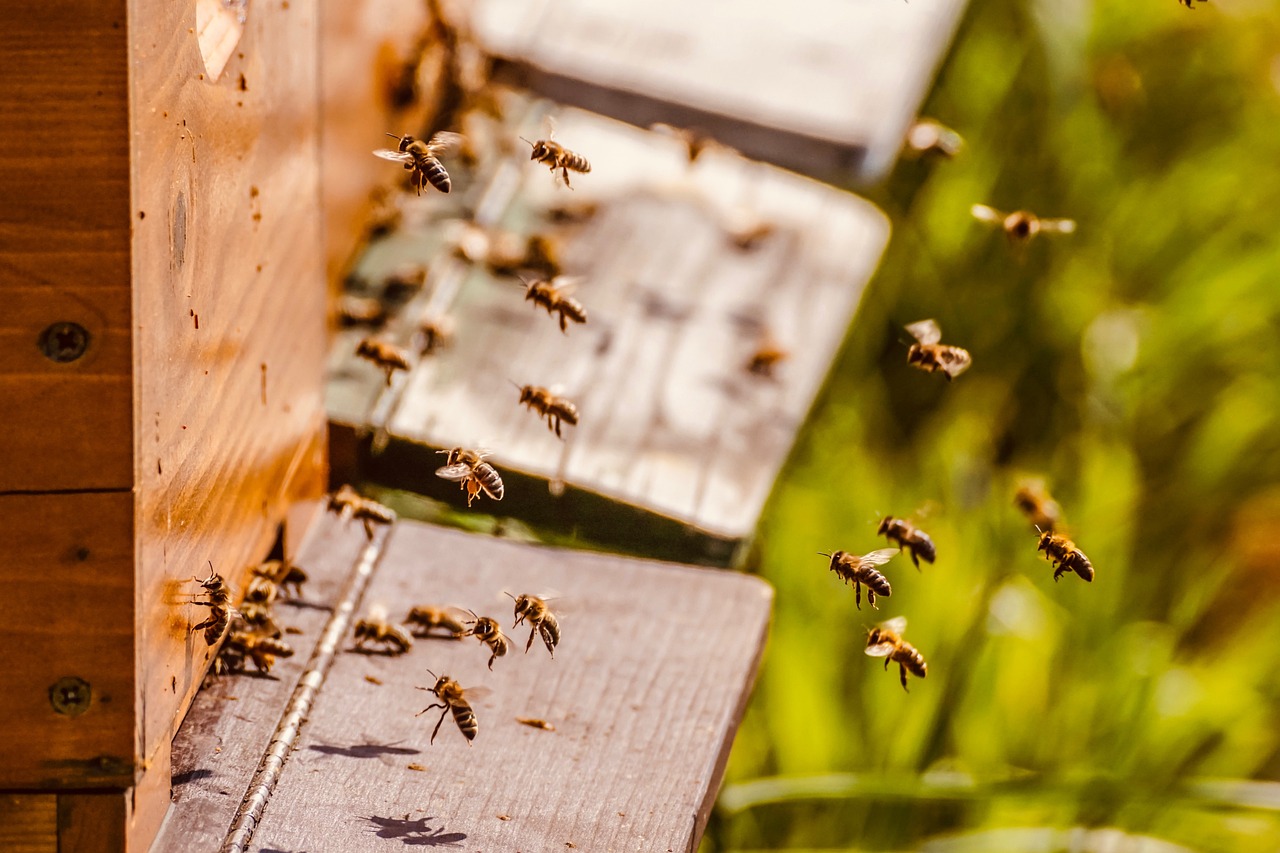
The Importance of Bees
Bees are not just buzzing insects that we see flitting around flowers; they are essential players in our ecosystems and a cornerstone of agricultural success. Understanding the crucial role that bees play is vital for anyone stepping into the world of beekeeping. These industrious little creatures are responsible for pollinating approximately 75% of the world's flowering plants, which includes a significant portion of the crops we rely on for food. Without bees, we would face a drastic decline in the diversity of our flora, leading to dire consequences for food production and ecological balance.
Imagine walking through an empty garden, devoid of vibrant colors and life. That’s what our world could look like without bees. They contribute not only to the growth of fruits and vegetables but also to the health of entire ecosystems. By pollinating plants, bees facilitate the reproduction of many species, which in turn supports a variety of wildlife. This interdependence highlights the need for sustainable beekeeping practices that prioritize the health of bee populations.
Moreover, bees are crucial for maintaining biodiversity. The variety of plants they pollinate provides food and habitat for numerous other species, creating a balanced ecosystem. When we lose bee populations, we risk losing entire plant species, which can trigger a cascade of ecological consequences. For instance, a decline in flowering plants can lead to a decrease in herbivores, which in turn affects the predators that rely on them. It’s a delicate balance, and bees are at the center of it all.
In addition to their ecological importance, bees are vital for our economy. The agricultural sector heavily relies on bee pollination, with an estimated economic contribution of over $15 billion annually in the United States alone. This highlights the importance of adopting sustainable beekeeping practices. By ensuring that we maintain healthy bee populations, we are not only supporting our environment but also safeguarding our food supply and economic stability.
As we dive deeper into the world of eco-friendly beekeeping, it’s crucial to remember that every action counts. Whether you are a beginner or a seasoned beekeeper, understanding the importance of bees will guide your practices and decisions. By prioritizing their health and welfare, we can contribute to a more sustainable future for both bees and humans.
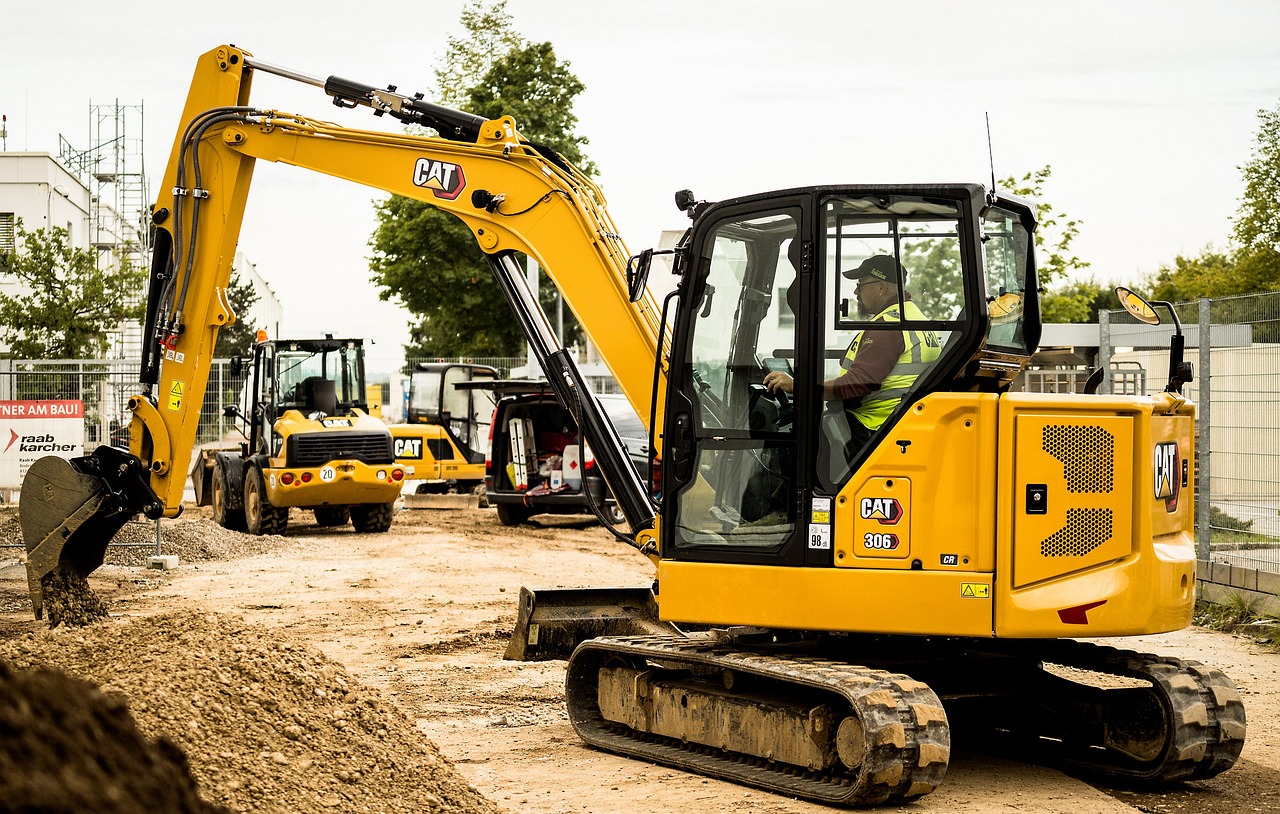
Choosing the Right Beekeeping Equipment
When embarking on your beekeeping journey, one of the first and most crucial steps is selecting the right equipment. The tools you choose not only affect your efficiency but also the health and well-being of your bee colonies. Imagine trying to build a house without the right tools; it would be a daunting task, right? Similarly, having the right beekeeping gear is essential for creating a thriving environment for your bees.
As a beginner, you might feel overwhelmed by the variety of equipment available. However, focusing on a few essential items can simplify the process. Here are some key components you should consider:
- Beehives: The hive is the home for your bees. It’s where they live, breed, and produce honey. Choosing the right type of hive—whether it's a top-bar hive or a Langstroth hive—will significantly impact your beekeeping experience.
- Protective Gear: Safety is paramount! Investing in a good bee suit, gloves, and a veil will protect you from stings while you work with your bees.
- Smoker: A smoker calms bees and makes them less likely to sting. It’s an essential tool that helps you manage your hive more effectively.
- Hive Tool: This multi-functional tool is used for prying apart hive boxes and scraping off excess wax or propolis. It’s a must-have for any beekeeper.
Now, let’s break down the types of beehives available, as this is a significant decision in your beekeeping journey. Each hive type has its own set of advantages and drawbacks that can influence your choice:
| Hive Type | Advantages | Drawbacks |
|---|---|---|
| Top-Bar Hive | Easy to manage, promotes natural bee behavior, inexpensive | Less honey production compared to Langstroth hives |
| Langstroth Hive | High honey yield, widely used, easy to expand | More expensive, requires more maintenance |
Choosing eco-friendly options is also vital. Many beekeepers are now opting for sustainable materials that minimize their environmental impact. For instance, consider using hives made from reclaimed wood or natural finishes that are safe for the bees. Not only does this support your commitment to the environment, but it also ensures that your bees thrive in a healthy habitat.
In conclusion, the right beekeeping equipment lays the foundation for a successful and sustainable beekeeping experience. By carefully selecting your tools and focusing on eco-friendly practices, you’re not just helping your bees; you’re contributing positively to the environment. Remember, every great beekeeper started as a beginner, so take your time, do your research, and enjoy the process!
Q: What is the best type of beehive for beginners?
A: Many beginners find top-bar hives easier to manage due to their simplicity and alignment with natural bee behavior. However, Langstroth hives are also popular for their high honey yield.
Q: Do I need protective gear for beekeeping?
A: Yes, protective gear is essential to safeguard against bee stings, especially when you are just starting out.
Q: How much does beekeeping equipment cost?
A: The cost can vary widely depending on the equipment you choose. A basic setup can range from a few hundred to over a thousand dollars, depending on the quality and type of equipment.
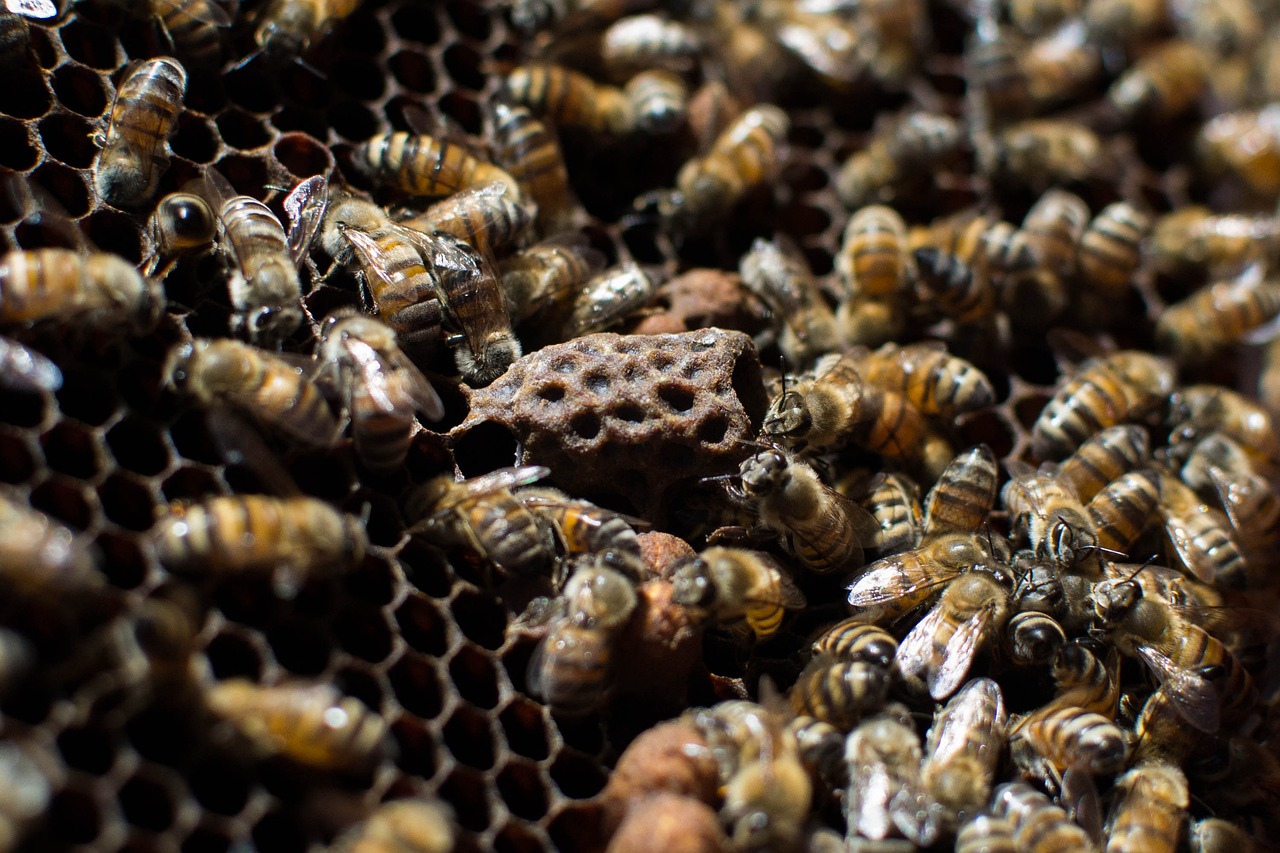
Types of Beehives
When diving into the world of beekeeping, one of the first decisions you'll face is what type of beehive to choose. This choice is crucial because the design of the hive can significantly influence the health of your bee colony and your overall success as a beekeeper. There are several types of beehives available, each with its own unique features and benefits. Understanding these options will help you make an informed decision that aligns with your eco-friendly goals.
Two of the most popular beehive designs are the Top-Bar Hive and the Langstroth Hive. Each of these hives has its own advantages and disadvantages, and they cater to different beekeeping styles and philosophies.
The Top-Bar Hive is often favored by those who prioritize sustainability and natural beekeeping practices. This hive design allows bees to build their comb in a more natural fashion, which can reduce stress on the colony. With top-bar hives, you can easily inspect the frames without disturbing the entire colony, making it an excellent choice for beginners. Additionally, these hives are typically made from sustainable materials, further supporting your eco-friendly objectives.
On the other hand, the Langstroth Hive is the most commonly used hive in commercial beekeeping. It features removable frames that allow for easy management and honey extraction. While this hive is efficient and widely used, it can sometimes encourage practices that may not align with sustainable beekeeping principles, such as the use of chemicals for pest control. Beginners should weigh the benefits of efficiency against their commitment to eco-friendly practices when considering this option.
To help you visualize the differences between these two popular hive types, here's a quick comparison:
| Hive Type | Pros | Cons |
|---|---|---|
| Top-Bar Hive |
|
|
| Langstroth Hive |
|
|
Ultimately, the choice of hive will depend on your personal preferences, your approach to beekeeping, and your commitment to maintaining an eco-friendly practice. As you explore your options, consider how each hive type aligns with your values and the health of your bees. Remember, the goal is to create a thriving environment for your bees while also supporting the ecosystem around you.
Q: What is the best type of beehive for beginners?
A: The Top-Bar Hive is often recommended for beginners due to its simplicity and alignment with natural bee behavior. However, Langstroth Hives are also a good choice if you're looking for higher honey yields.
Q: How do I choose the right hive for my location?
A: Consider your local climate, the availability of resources, and your beekeeping goals. Research local beekeeping practices and consult with experienced beekeepers in your area for tailored advice.
Q: Can I switch hive types later on?
A: Yes, many beekeepers start with one type of hive and switch to another as they gain experience and better understand their preferences and the needs of their bees.

Top-Bar Hives
Top-bar hives are gaining popularity among eco-conscious beekeepers, and for good reason! These hives are designed to mimic the natural nesting habits of bees, allowing them to build their combs in a way that feels more instinctual to them. Unlike traditional hives, where bees are forced to build their combs in frames, top-bar hives provide a more open and flexible structure. This not only aligns with the natural behavior of bees but also promotes their overall health and well-being.
One of the standout benefits of top-bar hives is their ease of management. Since they are typically lower to the ground, beekeepers can inspect their colonies without the need for heavy lifting or complicated equipment. This accessibility makes it easier for beginners to engage with their bees, observe their behavior, and make necessary adjustments to hive management. Plus, the simplicity of the design means that you can often build your own top-bar hive using sustainable materials, which is a fantastic way to minimize your environmental impact.
Another advantage is the natural comb-building process. In a top-bar hive, bees have the freedom to create their own comb without the constraints of pre-manufactured frames. This allows for a more organic structure that can lead to healthier bees and, ultimately, better honey production. When bees build their comb naturally, they can create cells that are optimally sized for their needs, which can help reduce stress on the colony and improve overall hive health.
However, it's essential to note that top-bar hives do come with their own set of challenges. For instance, managing honey extraction can be a bit trickier compared to traditional hives, as the comb is not removable in the same way. Beekeepers will need to develop techniques for harvesting honey that respect the bees' natural processes. Additionally, while top-bar hives can be excellent for beginners, they may require a more hands-on approach to ensure that the colony remains balanced and healthy.
In conclusion, top-bar hives offer a unique and eco-friendly option for those interested in sustainable beekeeping. They align closely with the natural behaviors of bees and provide an accessible entry point for beginners. By choosing a top-bar hive, you’re not just supporting your local bee population; you’re also embracing a more holistic approach to beekeeping that prioritizes the health of the environment.
- What is a top-bar hive? A top-bar hive is a beekeeping structure that allows bees to build their comb naturally on horizontal bars, promoting their natural behaviors.
- How do I harvest honey from a top-bar hive? Harvesting honey from a top-bar hive can be done by carefully cutting out the combs filled with honey, ensuring that you leave enough for the bees to sustain themselves.
- Are top-bar hives suitable for beginners? Yes! Top-bar hives are often recommended for beginners due to their simplicity and the opportunity they provide for hands-on learning.
- What materials do I need to build a top-bar hive? You can use sustainable materials like untreated wood, which is safe for bees, along with nails or screws for assembly.
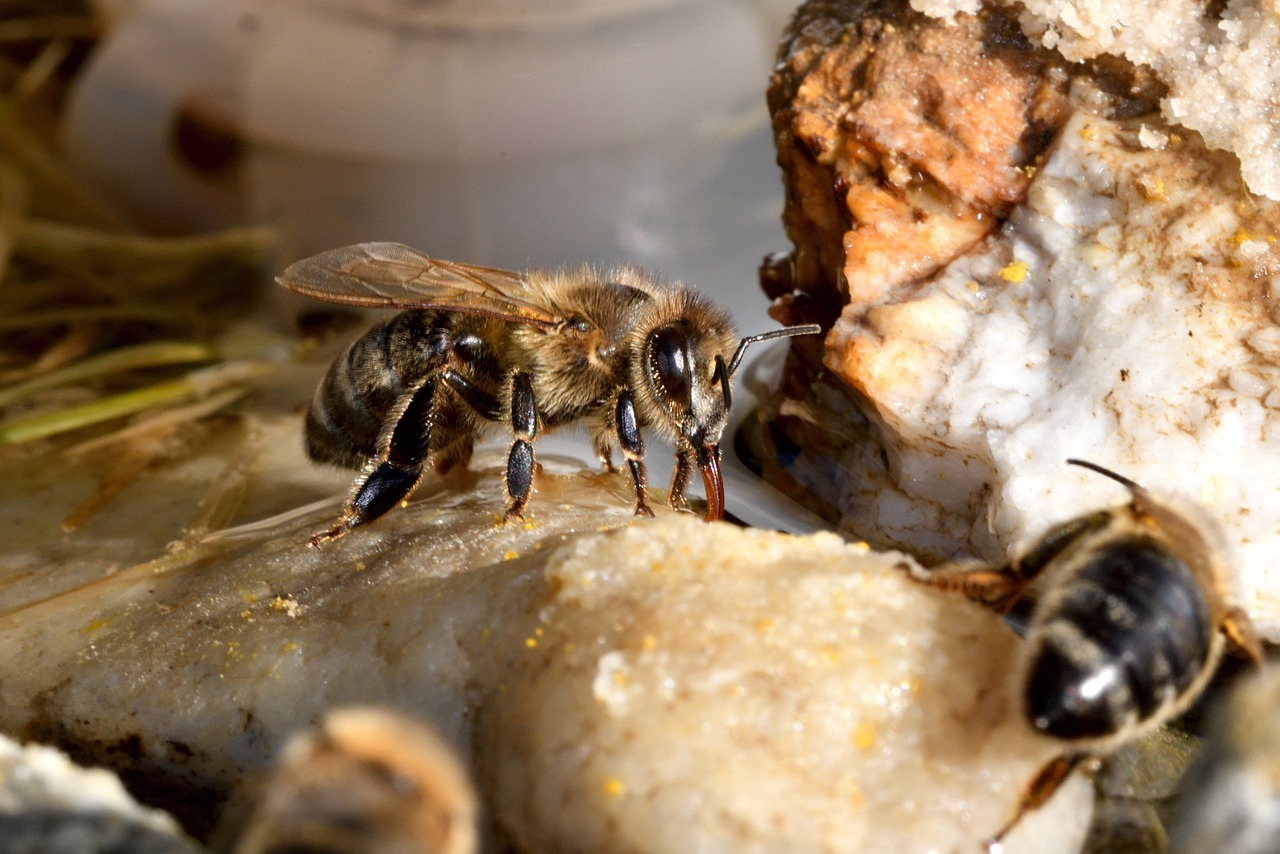
Langstroth Hives
Langstroth hives are arguably the most recognized and widely used beekeeping systems in the world, especially in commercial settings. Named after Reverend Lorenzo Langstroth, who invented this hive design in the mid-19th century, these hives utilize a modular structure that allows for easy management of bee colonies. The key feature of Langstroth hives is their use of removable frames, which provide beekeepers with the ability to inspect, manage, and harvest honey without disturbing the entire colony. This design not only enhances accessibility but also promotes healthier bee populations.
One of the significant advantages of Langstroth hives is their scalability. Beekeepers can add or remove boxes, known as supers, depending on the needs of the colony and the season. This flexibility is particularly beneficial during honey flow periods when bees require more space to store nectar and pollen. However, while the modular design offers numerous benefits, it is essential to understand that Langstroth hives can also have some drawbacks, especially for those pursuing eco-friendly practices.
For instance, the materials used in many commercial Langstroth hives are often not eco-friendly, with many made from treated wood or plastic. This can pose a risk to bee health and the environment. Therefore, if you decide to invest in a Langstroth hive, consider sourcing hives made from sustainable materials or those that incorporate natural finishes. Additionally, be mindful of the potential for overharvesting honey, which can weaken the colony if not done sustainably.
In terms of maintenance, Langstroth hives require regular inspections to ensure that the bees are healthy and that the hive is free from pests and diseases. Some beekeepers may find the management of these hives to be more labor-intensive compared to other designs, such as top-bar hives. However, the rewards can be substantial, as Langstroth hives often yield a higher honey production due to their efficient design.
Ultimately, choosing a Langstroth hive can be a great option for beginners who are willing to invest time in learning the necessary management techniques. It’s important to weigh the pros and cons, keeping in mind your personal goals for beekeeping. If you’re looking for a system that offers flexibility and the potential for high honey yields, a Langstroth hive might just be the right fit for you. Just remember to implement sustainable practices to ensure that your beekeeping efforts contribute positively to the environment.
- What are the main benefits of using Langstroth hives?
Langstroth hives offer modularity, ease of honey harvesting, and scalability, making them ideal for both beginners and experienced beekeepers. - Are Langstroth hives eco-friendly?
While they can be made from sustainable materials, many commercial options may not be eco-friendly. It’s essential to choose hives that prioritize sustainability. - How often should I inspect my Langstroth hive?
Regular inspections are crucial, ideally every 7-10 days during the active season, to monitor bee health and prevent issues. - Can I use Langstroth hives for organic beekeeping?
Yes, with careful management and the right practices, Langstroth hives can be used effectively in organic beekeeping.
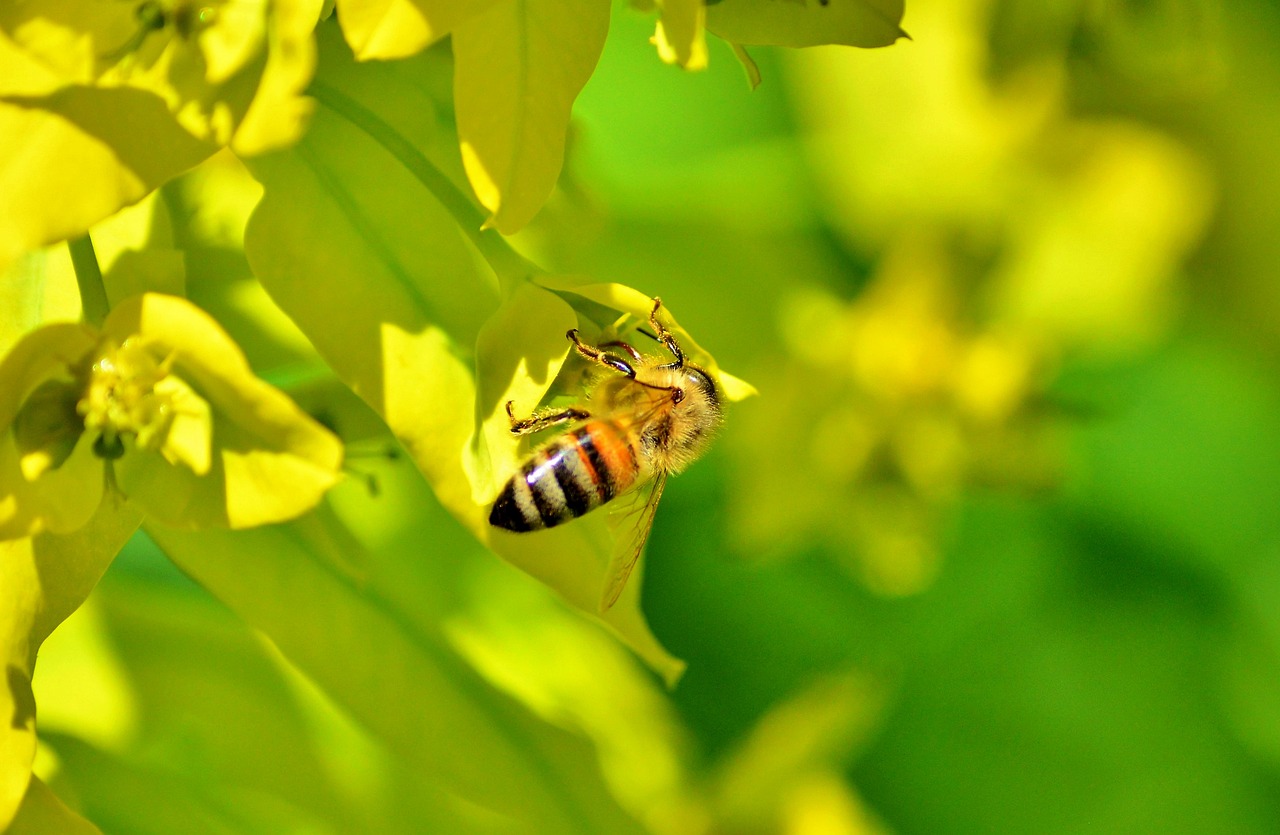
Essential Beekeeping Practices
When it comes to beekeeping, adopting sustainable practices is not just a choice; it's a responsibility. As a beginner, you’ll want to ensure that your bees thrive while also contributing positively to the environment. One of the first essential practices is organic pest management. Rather than relying on harmful chemicals, consider using natural alternatives like essential oils or beneficial insects. These methods not only protect your bees but also maintain the health of the surrounding ecosystem.
Another key practice is habitat preservation. Bees need a diverse range of flowers for foraging, so planting a variety of native plants in your garden can make a significant difference. Think of your garden as a buffet for bees! By providing them with a smorgasbord of options, you help ensure their nutrition and health. Additionally, maintaining a clean and safe environment around your hives is crucial. Regularly inspect your apiary for any signs of disease or pests, and keep the area free from debris that could harbor unwanted critters.
Incorporating regular hive inspections into your routine is another essential practice. These inspections allow you to monitor the health of your colony, check for signs of disease, and ensure that the queen is active and laying eggs. During these inspections, look for:
- Signs of pests such as varroa mites or wax moths
- Presence of diseases like American foulbrood
- Overall hive population and activity levels
Moreover, remember to keep detailed records of your inspections and any treatments you apply. This documentation will not only help you track the health of your bees but also assist in making informed decisions in the future.
Lastly, consider the importance of education and community engagement. Joining local beekeeping associations or participating in workshops can provide invaluable insights and support. Engaging with experienced beekeepers allows you to learn from their successes and mistakes, making your journey in eco-friendly beekeeping much smoother. Plus, you’ll be part of a community that shares your passion for these incredible pollinators!
Q: What is the best way to manage pests without chemicals?
A: You can manage pests through organic methods such as introducing beneficial insects, using essential oils, and maintaining strong hive health through regular inspections.
Q: How often should I inspect my hives?
A: It's recommended to inspect your hives every 7-10 days during the active season to monitor for health and productivity.
Q: What plants should I include in my garden for bees?
A: Consider planting a mix of native flowers, herbs, and shrubs that bloom at different times throughout the season to provide a continuous food source.
Q: How can I learn more about sustainable beekeeping?
A: Joining local beekeeping associations and participating in online courses can significantly enhance your knowledge and skills in sustainable practices.
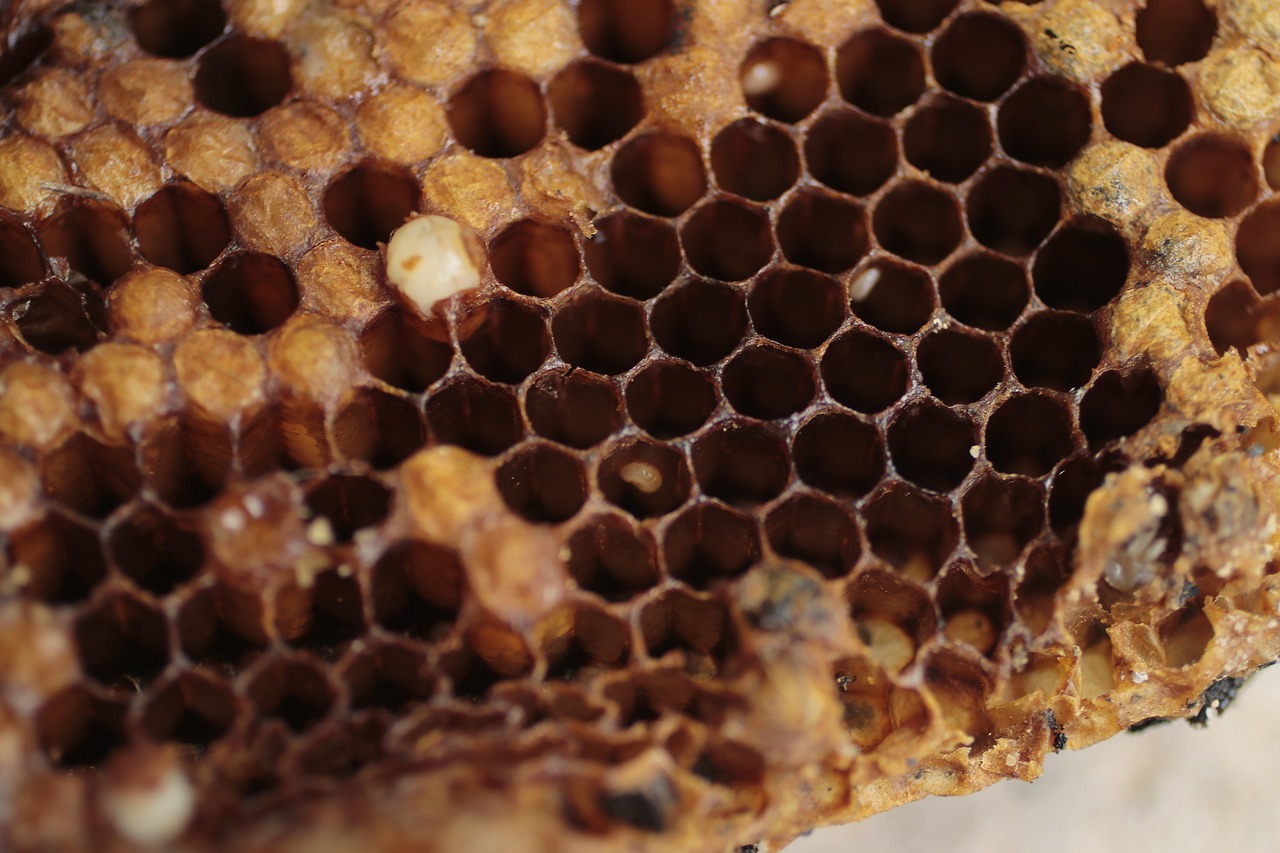
Understanding Bee Behavior
Understanding bee behavior is not just a fascinating aspect of beekeeping; it’s a crucial element that can significantly enhance your success as a beekeeper. Bees are social insects with complex behaviors that are essential for the survival of their colonies. By familiarizing yourself with their social structure, communication methods, and foraging habits, you can create a more harmonious environment for your bees and improve hive management practices.
First off, let’s dive into the social structure of a bee colony. Each colony typically consists of three types of bees: the queen, worker bees, and drones. The queen is the heart of the hive, responsible for laying eggs and maintaining the colony's population. Worker bees, which are all female, perform various tasks such as foraging for nectar and pollen, caring for the queen's offspring, and defending the hive. Drones, the male bees, have the sole purpose of mating with a queen. Their roles are interconnected, and understanding these functions can help you appreciate the delicate balance within the hive.
Next, communication among bees is a remarkable phenomenon. Bees use a combination of chemical signals (pheromones) and physical movements (such as the famous waggle dance) to convey information. For instance, when a worker bee finds a good source of nectar, it returns to the hive and performs a dance that indicates the direction and distance of the food source. This form of communication is vital for the survival of the colony, as it helps optimize foraging efficiency. Understanding these communication methods can help you better interpret the behavior of your bees and respond appropriately to their needs.
Speaking of foraging, let’s explore the foraging habits of bees. Bees are not just passive collectors of nectar; they actively seek out diverse floral sources to gather food for their colony. This behavior is crucial for honey production and the overall health of the hive. When bees forage, they collect nectar, which they convert into honey, and pollen, which serves as a protein source for the brood. As a beekeeper, providing a variety of flowering plants in the vicinity of your hives can significantly enhance your bees' foraging success. Consider planting native flowers, herbs, and other bee-friendly plants to create a vibrant habitat.
In addition to understanding these behaviors, it’s important to recognize the environmental factors that can influence bee behavior. Changes in weather, availability of food sources, and even human activities can impact how bees forage and communicate. For instance, during a drought, bees may struggle to find enough food, leading to increased competition and stress within the colony. By being aware of these external factors, you can take proactive measures to support your bees, such as providing supplemental feeding or ensuring their habitat remains healthy and diverse.
In summary, understanding bee behavior is essential for anyone interested in eco-friendly beekeeping. By learning about the social structure, communication methods, and foraging habits of bees, you can foster a thriving bee colony that not only produces honey but also contributes positively to the environment. Remember, a happy bee is a productive bee, so take the time to observe and appreciate these incredible creatures!
- What is the role of the queen bee? The queen bee is responsible for laying eggs and maintaining the colony's population.
- How do bees communicate? Bees communicate using pheromones and the waggle dance to convey information about food sources.
- Why is foraging important for bees? Foraging is essential for collecting nectar and pollen, which are vital for honey production and brood rearing.
- How can I support my bees' foraging efforts? Planting a variety of flowering plants can provide bees with abundant food sources and improve their foraging success.
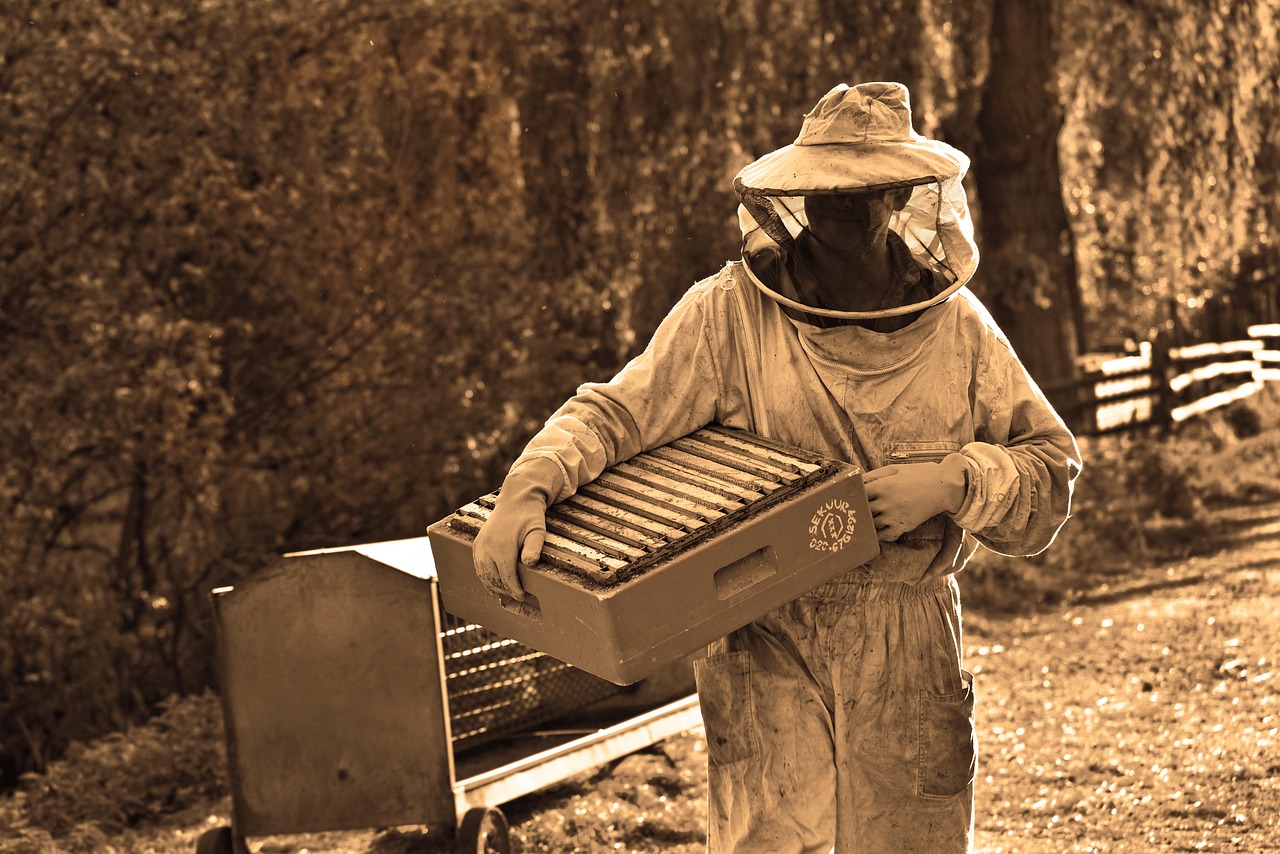
Colony Structure
Understanding the structure of a bee colony is absolutely essential for anyone venturing into the world of beekeeping. A bee colony operates much like a well-oiled machine, with each member playing a unique and vital role. At the heart of this social structure is the queen bee, who is often regarded as the mother of the hive. Her primary responsibility is to lay eggs, ensuring the continuation of the colony. In fact, a healthy queen can lay up to 2,000 eggs per day during peak season!
Alongside the queen, the majority of the hive is composed of worker bees. These industrious females are responsible for a wide array of tasks that keep the colony thriving. From foraging for nectar and pollen to maintaining the hive's cleanliness and temperature, worker bees are the backbone of the colony. Interestingly, their roles can change as they age; younger workers tend to focus on hive maintenance, while older bees venture out to collect food.
Then, we have the drones, the male bees of the colony. Drones have one primary function: to mate with a queen from another hive. However, they do not partake in foraging or hive maintenance. In fact, during the winter months, when resources are scarce, drones are often expelled from the hive to conserve food, showcasing the colony's focus on survival and efficiency.
To visualize this structure better, here’s a simple breakdown:
| Bee Type | Role | Characteristics |
|---|---|---|
| Queen | Reproduction | Single queen per hive; lays thousands of eggs |
| Worker Bees | Foraging, cleaning, hive maintenance | Female; performs various roles throughout life |
| Drones | Mating | Male; larger than workers; no stinger |
Each of these roles is crucial for the overall health and productivity of the hive. By understanding the colony structure, beginners can better appreciate the dynamics at play and make informed decisions when it comes to hive management. It's like being part of a community where every individual has a purpose, and when they work together harmoniously, the results can be astonishing!
- What is the role of the queen bee? The queen bee is responsible for laying eggs and maintaining the population of the hive.
- How many worker bees are typically in a colony? A healthy colony can have anywhere from 20,000 to 80,000 worker bees, depending on the season.
- What happens to drones in winter? Drones are usually expelled from the hive in winter to conserve food, as they do not contribute to hive maintenance.
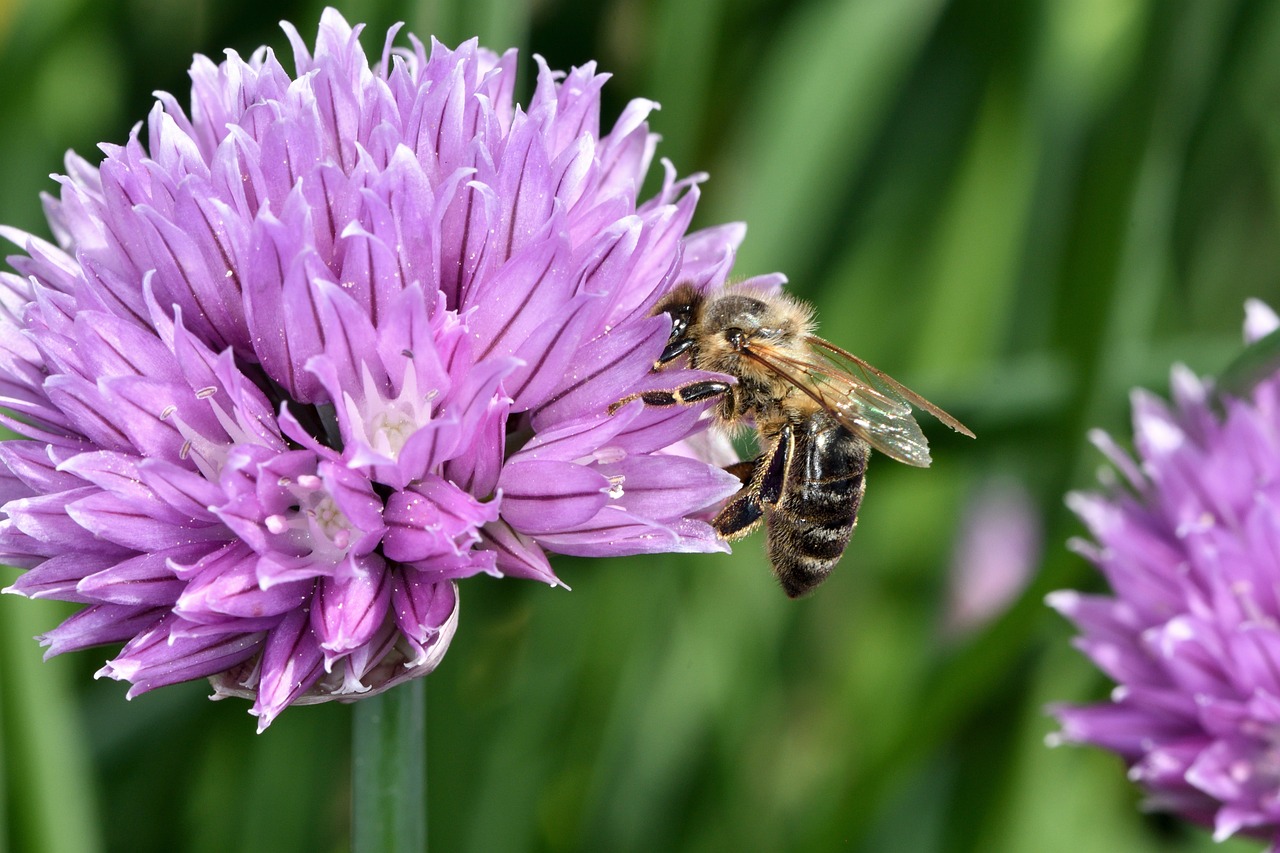
Foraging and Pollination
The intricate relationship between bees and the environment is a fascinating dance of survival and productivity. When we talk about foraging, we’re diving into the world of how bees gather their food and, in the process, contribute to the pollination of countless plants. Imagine a bustling city where each bee is a tiny worker bee, flitting from flower to flower, collecting nectar and pollen like a child collecting shiny rocks. This not only sustains the bee colony but also supports the broader ecosystem.
Bees primarily forage for two key resources: nectar and pollen. Nectar is the sugary liquid that provides energy, while pollen serves as a protein source necessary for the growth and development of young bees. Interestingly, a single bee can visit up to 2,000 flowers in one day, showcasing their incredible work ethic. This foraging behavior is essential not just for the bees but for our food systems as well. In fact, it’s estimated that about one-third of the food we consume relies on pollination, largely performed by bees!
Pollination occurs when bees transfer pollen from the male parts of a flower (the anthers) to the female parts (the stigma). This process is crucial for the fertilization of plants, leading to the production of fruits and seeds. When bees visit flowers, they inadvertently pick up pollen on their bodies and carry it to the next bloom. This is where the magic happens! Without this natural service, many of our favorite fruits, vegetables, and nuts would become scarce.
To support these little pollinators, it’s vital to create a diverse environment filled with various flowering plants. Here are a few tips to enhance the foraging opportunities for bees:
- Plant native flowers that are adapted to your local climate.
- Choose a variety of plants that bloom at different times throughout the season to provide a continuous food source.
- Avoid using chemical pesticides, which can harm bees and other beneficial insects.
By fostering a bee-friendly environment, you not only help sustain bee populations but also enhance the productivity of your garden or farm. Just think of your garden as a buffet for bees, where they can feast on a smorgasbord of nectar-rich flowers!
In conclusion, understanding the foraging habits and pollination processes of bees is essential for any aspiring beekeeper. By recognizing the importance of these activities, you can take actionable steps to create a thriving ecosystem that supports both bees and the environment. Remember, when you plant a flower, you're not just beautifying your space; you're playing a crucial role in the survival of these remarkable creatures.
- Why are bees important for pollination? Bees are crucial for pollination because they transfer pollen between flowers, which is necessary for fertilization and the production of fruits and seeds.
- How can I create a bee-friendly garden? To create a bee-friendly garden, plant a variety of native, nectar-rich flowers that bloom at different times and avoid using harmful pesticides.
- What do bees collect during foraging? Bees collect nectar for energy and pollen for protein, which is essential for feeding their young.
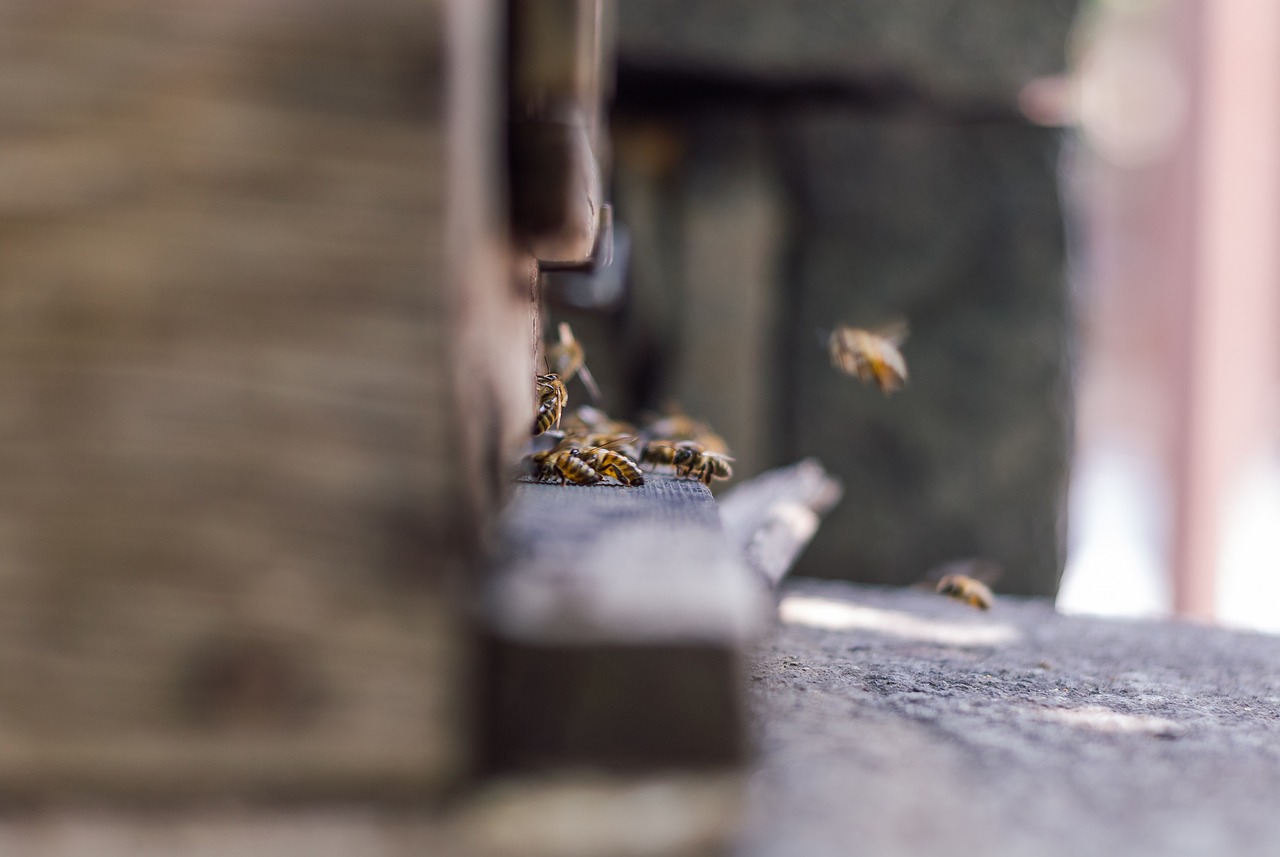
Harvesting Honey Sustainably
Harvesting honey is not just about collecting that delicious golden liquid; it's about doing so in a way that respects and supports the bee colonies that produce it. For beginners, understanding the balance between your needs as a beekeeper and the health of your bees is crucial. A sustainable approach to honey harvesting ensures that you can enjoy the fruits of your labor while also promoting the longevity and vitality of your bee colonies. So, how do you go about it?
First and foremost, timing is everything. Harvesting honey too early can deplete the bees' food reserves, especially as they prepare for winter. Ideally, you should wait until the honey is capped, meaning the bees have sealed it with wax, indicating that it has reached the right moisture content. This not only ensures that the honey is ready for consumption but also allows the bees to retain enough food for themselves.
When it comes to the actual techniques for honey extraction, there are several methods you can employ. Many beekeepers prefer using a honey extractor, a device that spins the frames to fling the honey out while keeping the wax cells intact. This method is efficient and minimizes disruption to the hive. However, if you're looking for a more hands-on approach, you can also opt for the crush and strain method, where you crush the honeycomb and strain it through a fine mesh, allowing the honey to flow while separating it from the wax.
Another important aspect of sustainable honey harvesting is ensuring that you leave enough honey for your bees. A good rule of thumb is to take no more than two-thirds of the honey from each hive. This allows the bees to have plenty of food to sustain themselves, especially during colder months when foraging is not possible. Remember, happy bees produce more honey!
After you've harvested the honey, it's essential to manage your hives properly to ensure ongoing health and productivity. This includes:
- Checking for signs of disease or pests
- Providing adequate ventilation
- Ensuring that there’s enough space for the bees to expand
By practicing these sustainable methods, you not only contribute to the health of your bee colonies but also to the overall ecosystem. Healthy bees mean better pollination and a thriving environment, which ultimately benefits us all. So, as you embark on your honey harvesting journey, keep these principles in mind, and you'll be well on your way to becoming a responsible and eco-friendly beekeeper!
Q: How can I tell when my honey is ready to be harvested?
A: Honey is ready to be harvested when the cells are capped with wax, indicating that it has reached the proper moisture content.
Q: What is the best method for extracting honey?
A: The honey extractor is the most efficient method, but the crush and strain method is also effective for smaller batches.
Q: How much honey should I leave for my bees?
A: It's recommended to leave at least one-third of the honey in the hive to ensure the bees have enough food for themselves.
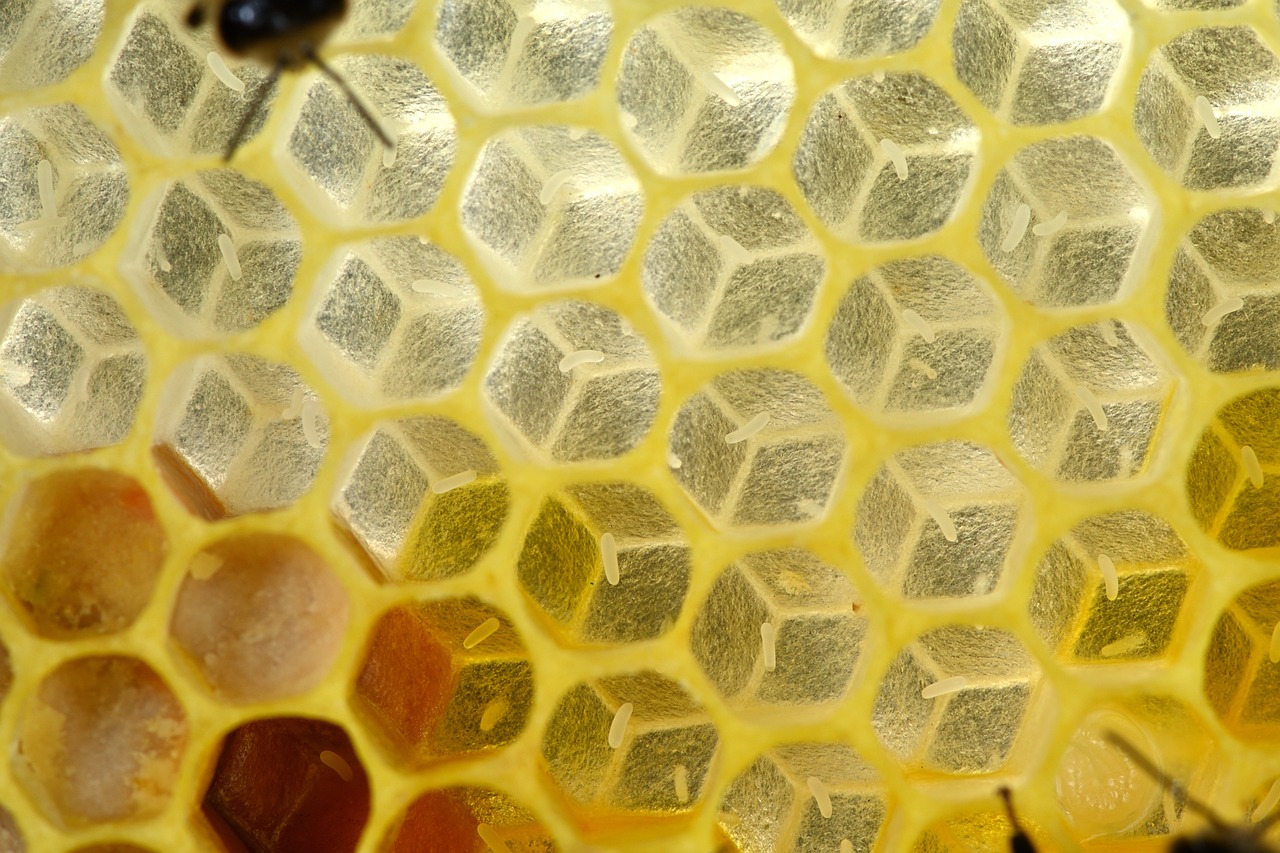
Timing and Techniques
When it comes to harvesting honey sustainably, timing and technique are everything. Imagine the thrill of uncapping a frame filled with golden, glistening honey, but hold on! Rushing into the harvest without considering the bees' needs can lead to disaster. The key is to strike a balance between your desire for honey and the health of your bee colony. So, when is the right time to harvest? Generally, the best time is during late summer or early fall, after the bees have had a chance to gather plenty of nectar but before the colder months set in. This timing ensures that the bees have enough honey left for themselves to survive the winter.
To make sure you're harvesting at the optimal moment, look for these signs:
- Frames Full of Honey: Ensure that the frames are at least 80% capped. This means the bees have sealed the honey with wax, indicating it’s ready for harvest.
- Weather Conditions: Choose a dry, warm day for harvesting. This helps reduce the moisture content in the honey, making it less likely to ferment.
- Colony Health: Before you dive in, make sure your bees are healthy and thriving. A stressed or weak colony may not have enough resources to spare.
Now that you’ve pinpointed the right timing, let’s talk about techniques. The method you choose for honey extraction can significantly impact both the quality of the honey and the well-being of your bees. Here are some popular techniques:
- Uncapping: Use an uncapping knife or fork to carefully remove the wax caps from the honey-filled frames. This process should be gentle to avoid damaging the honeycomb.
- Extracting: Consider using a honey extractor, a device that spins the frames to fling honey out while leaving the comb intact. This method is efficient and allows bees to reuse their comb.
- Straining: After extracting the honey, strain it through a fine mesh to remove any wax particles or debris. This ensures that the honey is clean and ready for bottling.
Finally, remember that post-harvest management is just as crucial as the harvesting process itself. Once you’ve extracted the honey, take a moment to assess your hives. Ensure that the bees have enough food left for the winter and consider feeding them if necessary. This practice not only helps your bees survive but also fosters a healthy colony for future honey production. By being mindful of timing and employing the right techniques, you can enjoy the sweet rewards of beekeeping while ensuring your bees remain happy and healthy.
Q: How often should I harvest honey?
A: It depends on the strength of your colony and the nectar flow in your area. Generally, most beekeepers harvest once or twice a year, ideally in late summer.
Q: Can I harvest honey if my bees are still active?
A: Yes, but it’s best to do so when the bees are less active, such as in the early morning or late evening. This reduces stress on the bees.
Q: What should I do if I accidentally damage the comb while harvesting?
A: If you damage the comb, don’t worry! The bees will repair it over time. Just ensure they have enough resources to do so.
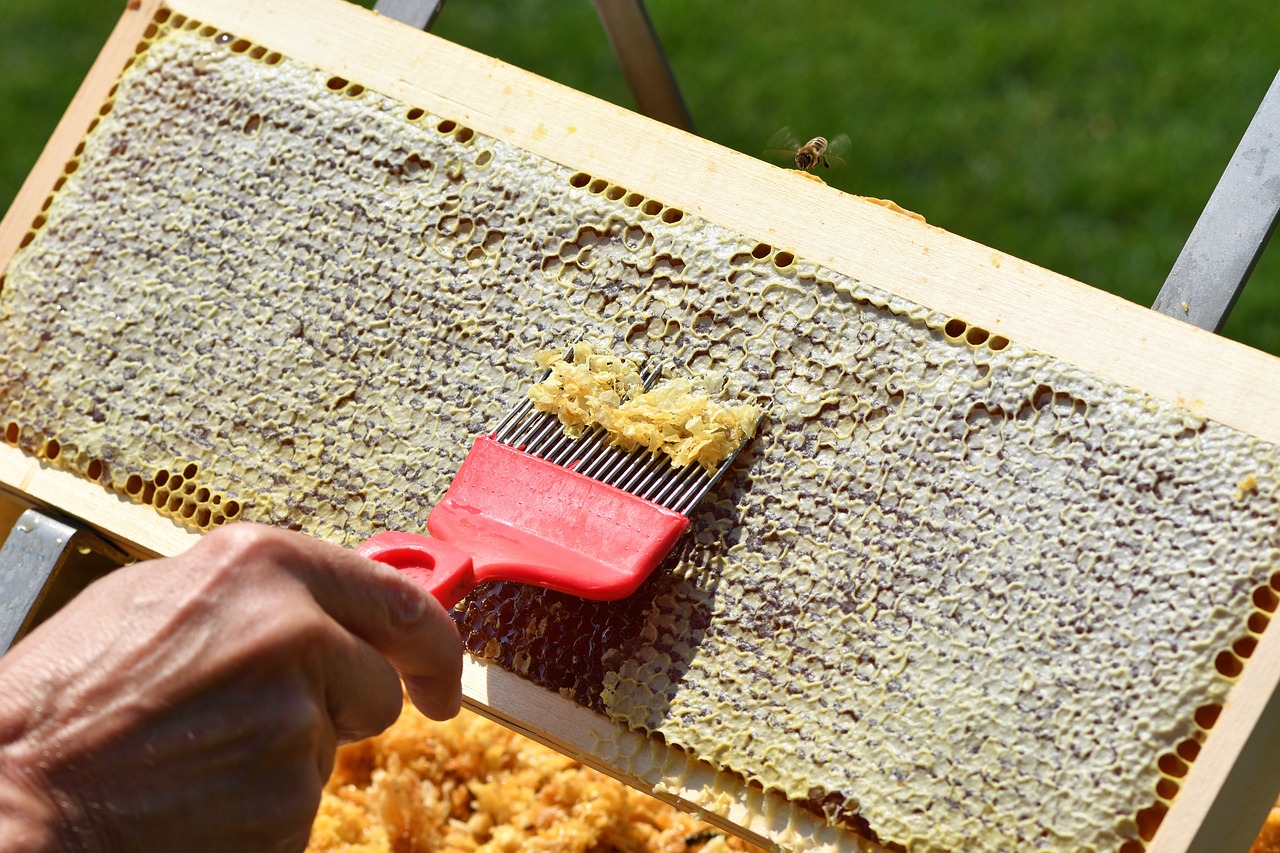
Post-Harvest Management
Once you've successfully harvested your honey, the work doesn't just stop there! In fact, is a crucial phase that can significantly impact the health and productivity of your bee colonies in the future. Think of it like a farmer tending to their crops after the harvest; the care you provide now can set the stage for a bountiful yield next season.
First and foremost, it's essential to check the health of your bees after honey extraction. This means inspecting your hives for any signs of stress or disease. During the honey harvest, bees can become agitated, and it’s vital to ensure that they are not overly disturbed. A thorough inspection can help you catch any potential issues early on, allowing you to take the necessary steps to address them.
Next, consider the food supply for your bees. After the honey is taken, they may need supplemental feeding to ensure they have enough resources to survive until the next nectar flow. You can use sugar syrup or specially formulated bee feeds to help them through this period. Remember, the goal is to keep your bees strong and healthy, so they can continue to thrive.
Additionally, maintaining hive cleanliness is essential. After honey extraction, it's a good practice to clean the hive components to prevent any buildup of mold or disease. This can be done by removing any old comb that is no longer usable and replacing it with fresh foundation. Keeping the hive environment clean contributes to the overall health of the colony.
Lastly, consider the queen's health. After a honey harvest, the queen may need some extra attention. Make sure she is laying eggs consistently and that the worker bees are caring for her properly. If you notice any signs of a failing queen, it may be time to think about requeening your hive. A strong queen is vital for a thriving colony and will ensure your bees are ready for the next season.
In summary, post-harvest management is all about ensuring your bees remain healthy and productive after honey extraction. By focusing on their health, food supply, cleanliness, and the queen's well-being, you can set your colonies up for success. Remember, a little attention now can lead to a flourishing hive in the future!
- What should I do if my bees seem agitated after harvesting?
It's normal for bees to be a bit upset after a harvest. Ensure you handle them gently and check for any signs of stress or disease. If they remain agitated for an extended period, consider giving them some space and checking the hive for issues. - How do I know if my bees need supplemental feeding?
If you notice that your bees are not storing enough honey or if there is a lack of nectar flow in your area, it’s a good idea to provide them with sugar syrup or bee feed to ensure they have enough resources. - What are the signs of a failing queen?
Signs of a failing queen can include a lack of eggs, a decrease in worker bee population, or aggressive behavior from the hive. If you notice these signs, consider requeening your hive.
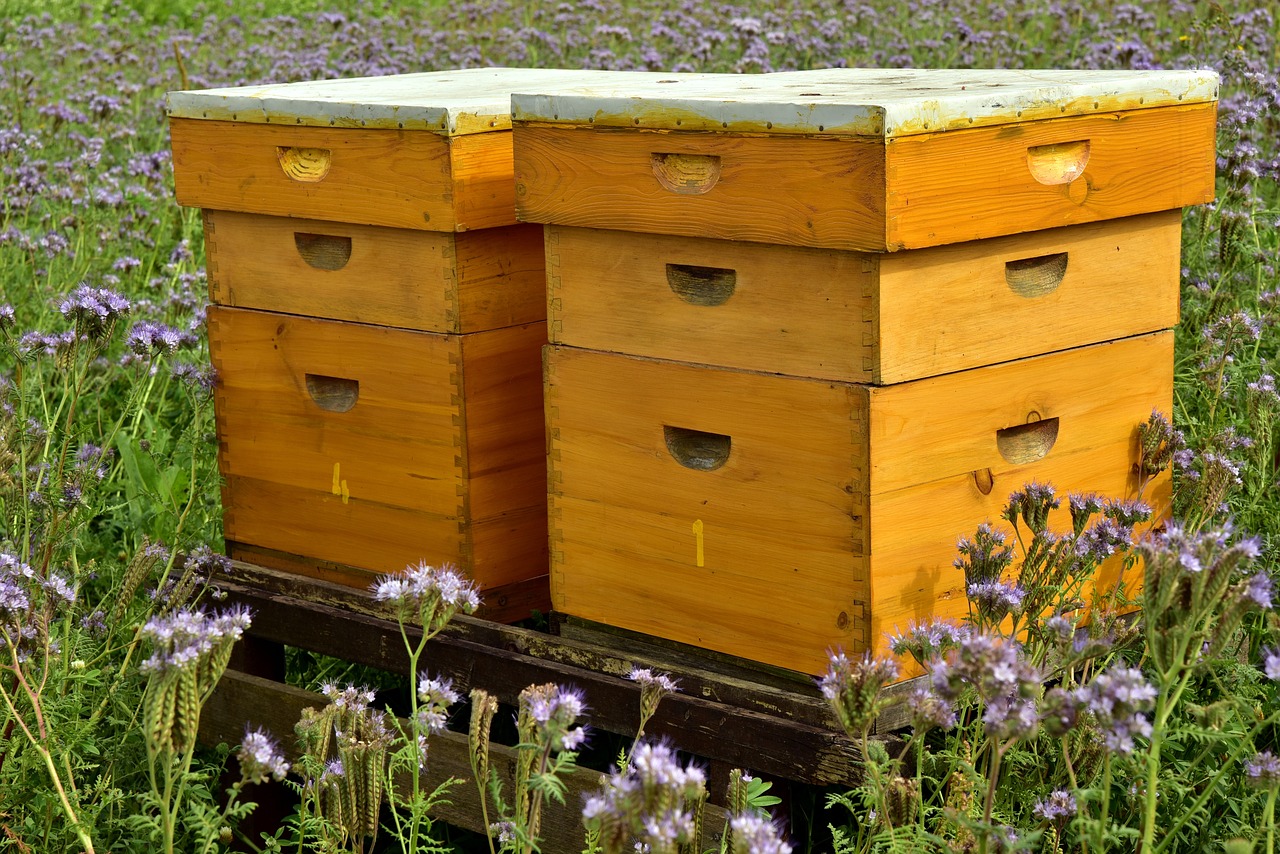
Challenges in Eco-Friendly Beekeeping
Embarking on the journey of eco-friendly beekeeping is an exciting yet challenging endeavor. While the rewards of maintaining healthy bee populations and producing delicious honey are plentiful, beginners often encounter a variety of obstacles that can be daunting. Understanding these challenges is crucial for anyone looking to keep bees sustainably. One of the most significant hurdles is managing pests, which can pose a serious threat to hive health. Without the use of harmful chemicals, finding effective, eco-friendly pest control methods can feel like searching for a needle in a haystack.
Another challenge is dealing with diseases that can afflict bee colonies. From Varroa mites to Nosema, these pests and pathogens can quickly decimate a hive if not managed properly. It's essential to recognize symptoms early and adopt preventive measures that align with eco-friendly practices. This can be particularly tough for beginners who may not yet have the experience to identify issues promptly.
Environmental factors also play a significant role in the success of eco-friendly beekeeping. Changes in climate, loss of habitat, and pesticide use in surrounding areas can all impact bee populations. As stewards of the environment, beekeepers must be vigilant and proactive in creating a supportive habitat for their bees. This might involve planting diverse flora to ensure a steady food supply, which can be a daunting task for those new to the craft.
To tackle these challenges effectively, beginners can adopt several strategies:
- Education: Continuously learn about bee health, pest management, and environmental stewardship.
- Community Support: Engage with local beekeeping communities for advice and shared experiences.
- Regular Monitoring: Keep a close eye on bee behavior and hive conditions to catch problems early.
By understanding these challenges and developing strategies to address them, beginners can cultivate a thriving bee colony while adhering to eco-friendly practices. Remember, the goal is not just to produce honey but to support the bees and the environment they inhabit. With patience, dedication, and a willingness to learn, anyone can become a successful eco-friendly beekeeper.
Q: What are the most common pests in eco-friendly beekeeping?
A: Some of the most common pests include Varroa mites, wax moths, and small hive beetles. Managing these pests sustainably is crucial for hive health.
Q: How can I prevent diseases in my bee colony?
A: Regular monitoring, maintaining strong colonies, and implementing good hygiene practices can help prevent diseases. It's also beneficial to educate yourself about common ailments and their symptoms.
Q: What plants should I grow to support my bees?
A: Bees thrive on a variety of flowering plants. Consider planting native wildflowers, herbs, and fruit trees to provide a diverse diet for your bees throughout the seasons.
Q: Is it necessary to use chemicals for pest management?
A: No, eco-friendly beekeeping emphasizes natural methods for pest management. Techniques such as trapping, using essential oils, and maintaining strong colonies can be effective alternatives.
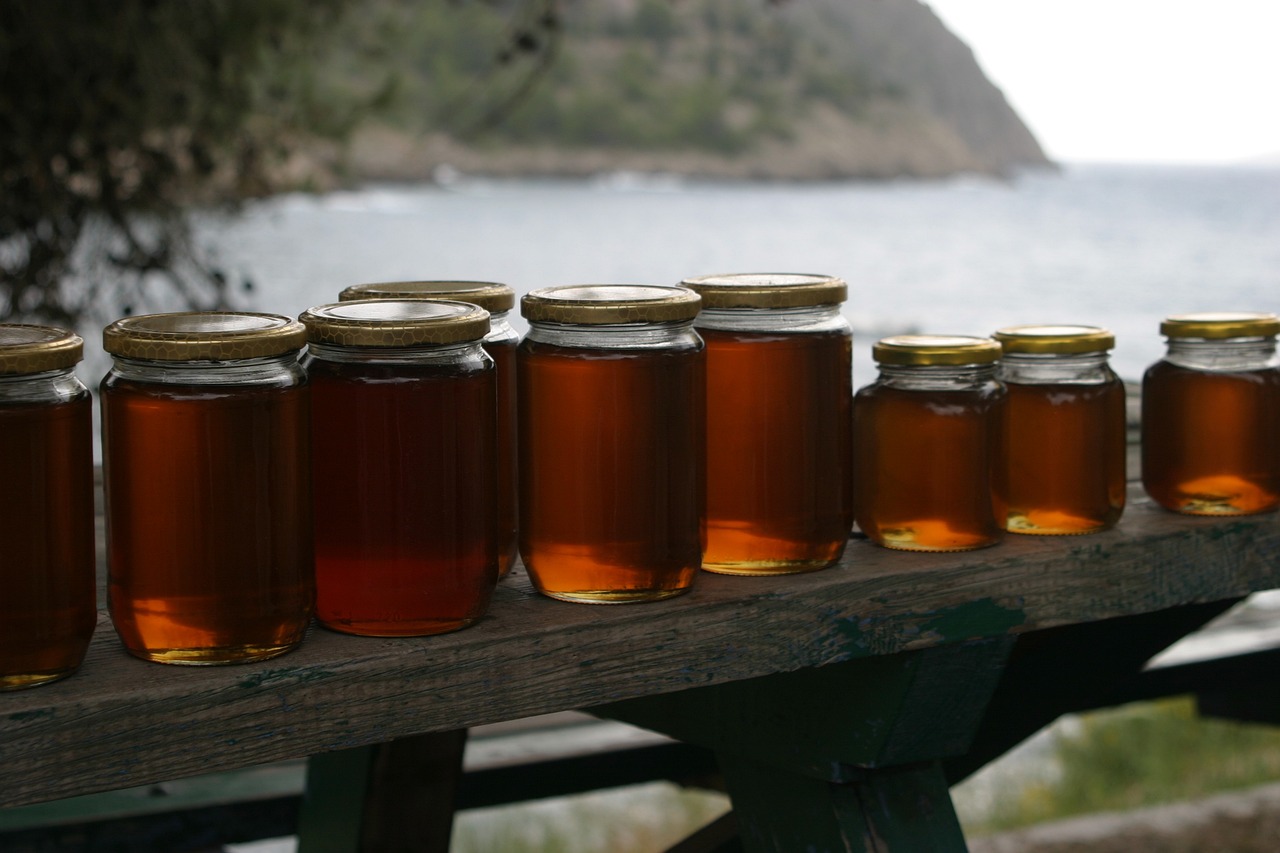
Pest Management
Pest management is a cornerstone of eco-friendly beekeeping, and it's essential for maintaining the health of your bee colonies. Just like any other living creature, bees are susceptible to various pests that can threaten their survival and productivity. As a beginner, you might wonder how to effectively manage these pests without resorting to harmful chemicals that can compromise the integrity of your hive and the surrounding environment. The good news is that there are several natural and sustainable methods to keep your bees safe.
First off, one of the most common pests that beekeepers encounter is the Varroa mite. These tiny parasites latch onto bees and feed on their bodily fluids, weakening the hive over time. To manage Varroa mites, you can use several eco-friendly techniques:
- Drone Brood Removal: By encouraging the bees to raise drone brood, which Varroa mites prefer, you can later remove these drone cells to eliminate the mites.
- Screened Bottom Boards: Installing a screened bottom board allows fallen mites to drop out of the hive, reducing their population.
- Essential Oils: Using essential oils like thymol can help control mite populations without harming the bees.
Another pest to be aware of is the small hive beetle. These pests can wreak havoc in your hive, but there are also sustainable ways to combat them. Regular hive inspections are crucial, as they allow you to catch infestations early. You can also use traps made from natural materials to capture these beetles before they can cause significant damage.
In addition to specific pest control methods, maintaining a strong and healthy colony is your best defense against pests. Healthy bees are more resilient and better equipped to fend off infestations. This means providing them with a diverse diet, ensuring they have access to clean water, and avoiding overcrowding in the hive. A well-structured hive environment not only supports the bees' natural behaviors but also minimizes the chances of pest outbreaks.
Moreover, practicing good hygiene around your apiary can significantly reduce pest problems. This includes regularly cleaning your equipment, removing old comb, and ensuring that any dead bees or debris are promptly cleared away. By keeping your beekeeping area tidy, you create a less inviting environment for pests, which is a win-win for both you and your bees.
Lastly, it's beneficial to stay informed about the latest research and practices in sustainable pest management. Engaging with local beekeeping associations or online forums can provide you with valuable insights and support from fellow beekeepers who share your commitment to eco-friendly practices. Remember, the goal is not just to eliminate pests, but to create a harmonious environment where your bees can thrive.
- What are the signs of a Varroa mite infestation? Look for signs such as bees with deformed wings, a drop in honey production, and the presence of mites on bees or in the hive.
- Can I use chemical treatments for pests? While chemical treatments can be effective, they often come with risks to bee health and the environment. It's best to explore natural alternatives first.
- How often should I inspect my hives for pests? Regular inspections every 1-2 weeks during the active season are recommended to catch any pest issues early.
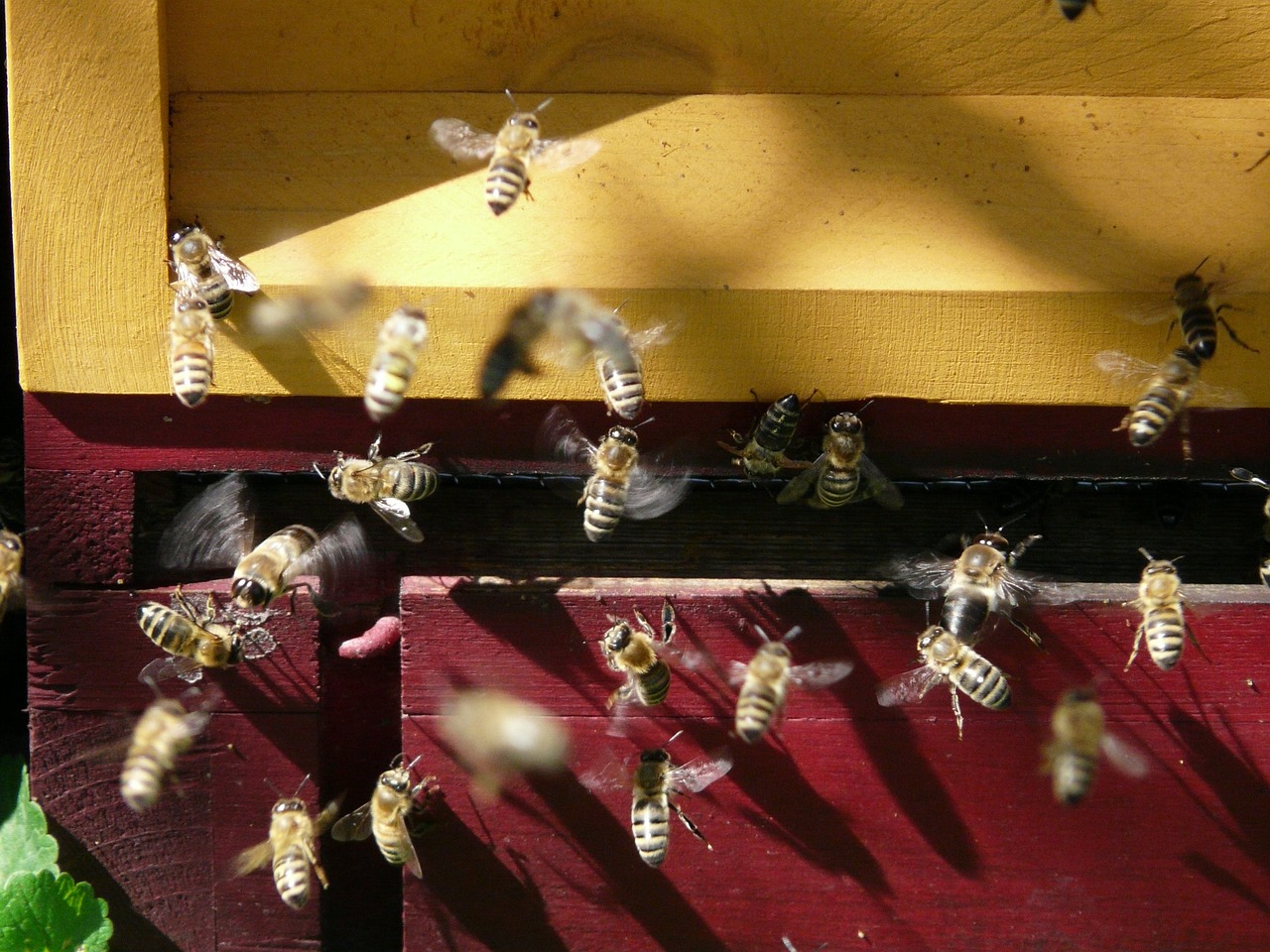
Dealing with Diseases
Understanding and managing bee diseases is vital for beginners in eco-friendly beekeeping. Just like humans, bees can fall prey to various ailments that can threaten their health and the overall productivity of the hive. It's essential to be proactive and informed about these diseases to ensure that your colonies thrive. After all, a healthy hive is a happy hive!
One of the most common diseases affecting bees is Varroa destructor, a parasitic mite that attaches itself to bees and feeds on their bodily fluids. This not only weakens the individual bees but can also lead to the spread of viruses within the colony. To combat this, many beekeepers employ integrated pest management (IPM) strategies that focus on monitoring mite levels and using organic treatments, such as essential oils or powdered sugar, to reduce mite populations without harming the bees.
Another significant concern is American foulbrood, a bacterial disease that affects bee larvae. This disease is highly contagious and can devastate a hive if not addressed promptly. If you suspect foulbrood, it’s crucial to act quickly by contacting a local expert and considering the destruction of infected colonies to prevent the spread. Remember, prevention is key! Regular hive inspections and maintaining good hygiene practices can significantly reduce the risk of disease outbreaks.
Here’s a quick overview of some common bee diseases and their eco-friendly management strategies:
| Disease | Symptoms | Management Strategies |
|---|---|---|
| Varroa Mites | Weakened bees, deformed wings, increased mortality | Monitor levels, use organic treatments like essential oils |
| American Foulbrood | Dead larvae, foul smell, sunken cappings | Hygiene practices, destroy infected hives |
| Nosema | Diarrhea, reduced lifespan, poor foraging | Proper nutrition, maintain hive strength |
In addition to these diseases, beekeepers should also be aware of Nosema, a fungal infection that affects the digestive system of bees. This disease can lead to poor foraging behavior and a reduced lifespan for affected bees. To combat Nosema, it’s essential to provide bees with a balanced diet rich in nutrients, as well as ensuring that they have access to clean water. Keeping your hives clean and well-ventilated can also help reduce the risk of this disease.
Ultimately, the key to dealing with diseases in your bee colonies lies in education and prevention. By familiarizing yourself with the symptoms of common bee diseases and implementing eco-friendly management strategies, you can help ensure the health and vitality of your hives. Remember, a little knowledge goes a long way in the world of beekeeping!
- What are the most common diseases affecting bees? The most common diseases include Varroa mites, American foulbrood, and Nosema.
- How can I prevent diseases in my bee colonies? Regular hive inspections, maintaining good hygiene, and providing a balanced diet can help prevent diseases.
- What should I do if I suspect my bees are sick? Contact a local beekeeping expert for advice and consider implementing eco-friendly management strategies.
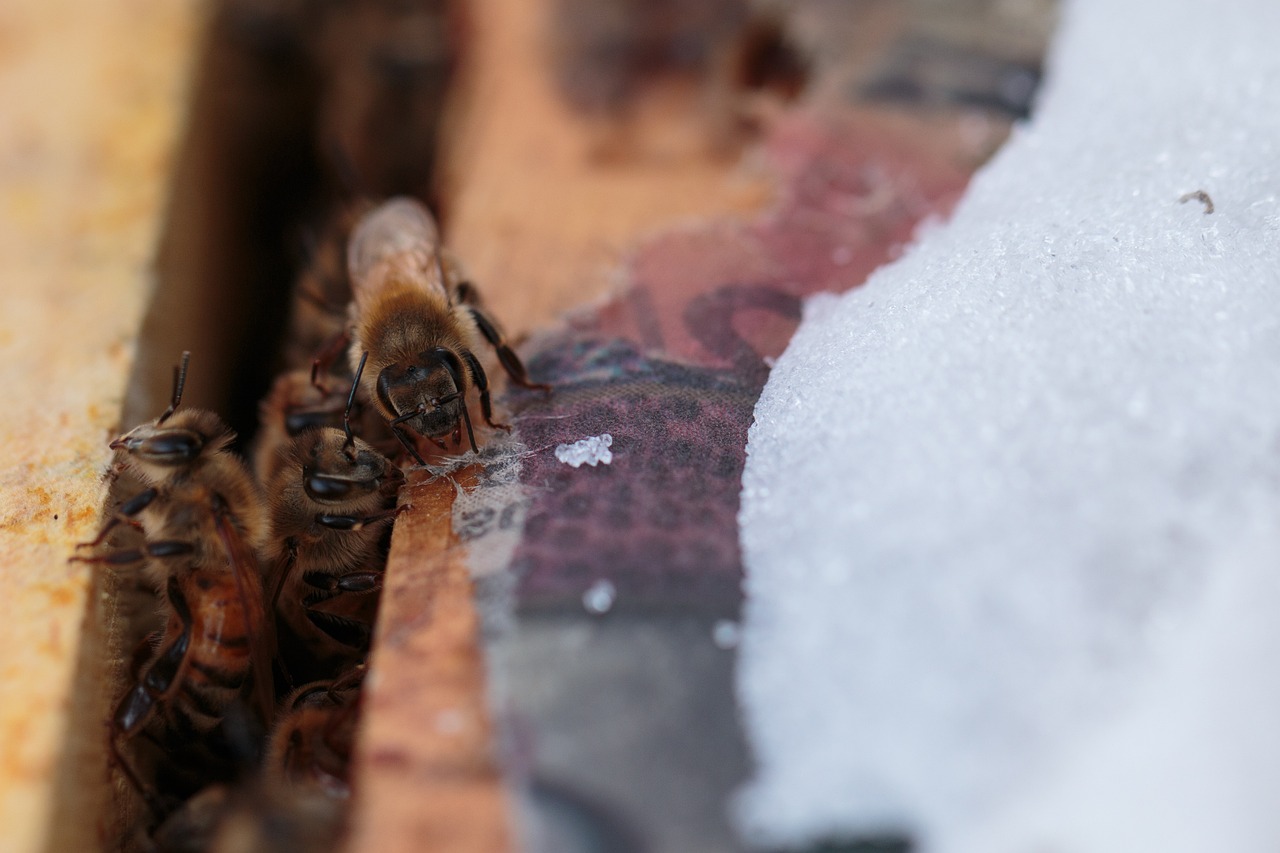
Community and Resources
When diving into the world of eco-friendly beekeeping, one of the most valuable assets you can have is a strong community and access to the right resources. Connecting with local beekeeping associations not only enhances your knowledge but also provides a support system that can help you navigate the ups and downs of maintaining your hives. Imagine having a network of experienced beekeepers to turn to when you face challenges or have questions—it's like having a safety net in a world that can sometimes feel overwhelming.
Local beekeeping associations often host workshops, seminars, and meetings where you can learn hands-on techniques and share experiences with fellow beekeepers. These gatherings can be incredibly enriching, as they allow you to exchange tips, discuss the latest in sustainable practices, and even participate in group purchasing of eco-friendly supplies. Plus, nothing beats the camaraderie of sharing a passion with others who understand the joys and struggles of beekeeping.
In addition to local associations, the internet is a treasure trove of information. There are numerous online learning platforms dedicated to beekeeping, offering courses and resources that cater to beginners and seasoned beekeepers alike. Whether you're looking for video tutorials on hive management or written guides on pest control, these platforms provide flexible learning options that fit your schedule. Some popular online resources include:
- Bee Culture: An online magazine that offers articles and tips for beekeepers of all levels.
- American Beekeeping Federation: A comprehensive resource for beekeeping news, events, and educational materials.
- Beekeeping for Beginners: A dedicated platform with courses covering everything from hive setup to honey extraction.
Additionally, social media groups and forums can be excellent places to connect with other beekeepers. Platforms like Facebook and Reddit have communities where you can ask questions, share your experiences, and even seek advice on specific issues you might encounter in your beekeeping journey. Just remember to engage respectfully and contribute positively, as these spaces thrive on mutual support and knowledge sharing.
Lastly, don't forget about the wealth of books available on the subject. Reading about different techniques and philosophies can provide you with insights that you might not find in online resources. Look for titles that focus on sustainable practices and eco-friendly methods, as these will align best with your goals as a conscientious beekeeper.
Q: How can I find a local beekeeping association?
A: You can search online for beekeeping associations in your area or check with agricultural extension offices, which often have resources or contacts for local beekeepers.
Q: Are there online courses for beginners?
A: Yes! Many websites offer online courses specifically designed for beginners, covering everything from the basics of beekeeping to more advanced techniques.
Q: What are the benefits of joining a beekeeping community?
A: Joining a beekeeping community provides networking opportunities, access to resources, and support from experienced beekeepers, which can be invaluable for beginners.
Q: Can I learn about eco-friendly practices online?
A: Absolutely! Many online platforms focus on sustainable beekeeping practices, offering courses, articles, and forums for discussion.
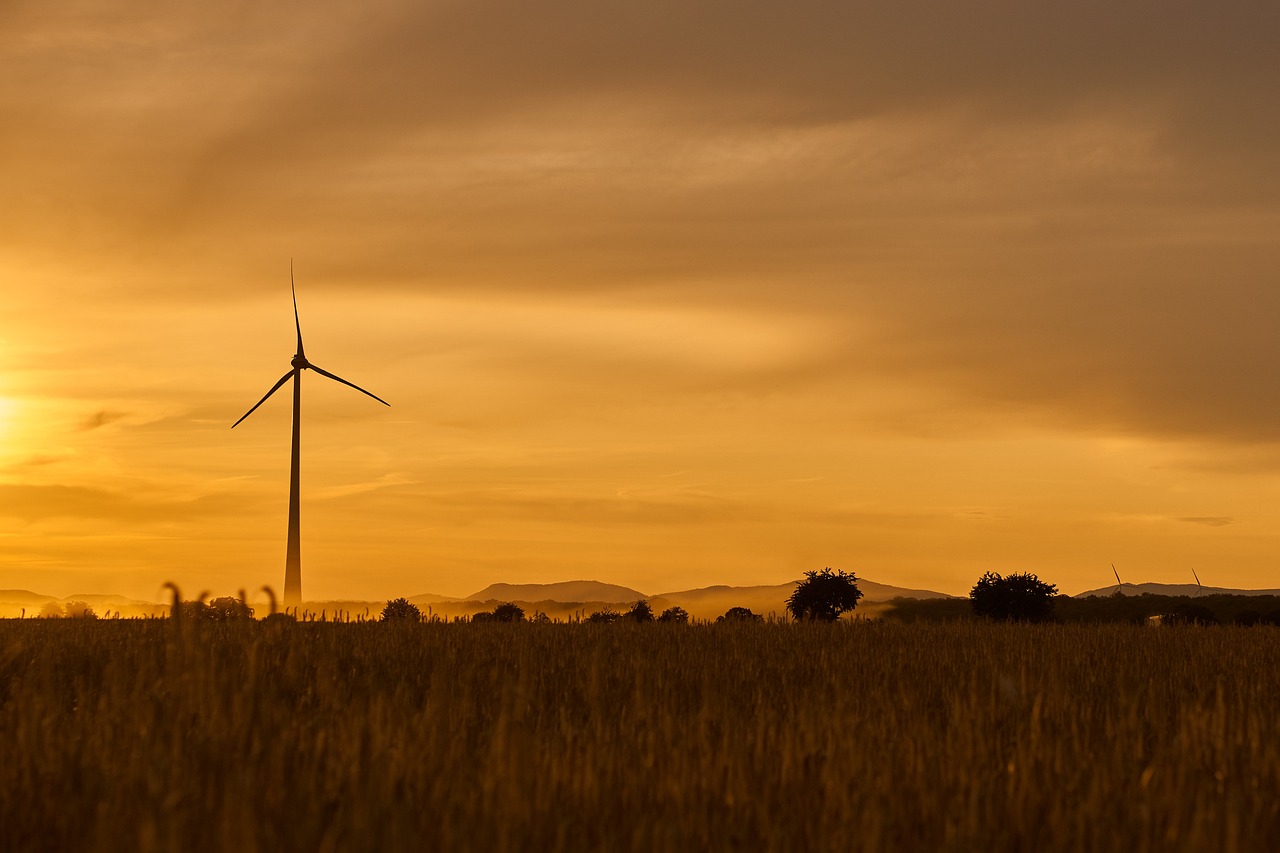
Local Beekeeping Associations
Joining a local beekeeping association can be a game-changer for beginners eager to dive into the world of eco-friendly beekeeping. These associations serve as a treasure trove of knowledge, resources, and community support. Imagine having a network of experienced beekeepers right at your fingertips, ready to share their wisdom and help you navigate the sometimes tricky waters of beekeeping. Not only do they offer hands-on workshops and training sessions, but they also provide valuable insights into local flora, pests, and climate conditions that can affect your hives.
One of the most significant benefits of being part of a local association is the opportunity to connect with fellow beekeepers. This camaraderie can be incredibly enriching, as you can exchange tips, troubleshoot problems, and even participate in group activities like honey tastings and hive inspections. Furthermore, many associations host regular meetings where you can learn from guest speakers, attend presentations on the latest sustainable practices, and stay updated on local regulations that may impact your beekeeping journey.
Additionally, local beekeeping associations often collaborate with environmental organizations to promote pollinator health and habitat preservation. By participating in these initiatives, you’re not just helping your bees; you’re also contributing to the larger ecosystem. This sense of community and shared purpose can be incredibly fulfilling, making your beekeeping experience all the more rewarding.
To find a local beekeeping association near you, consider checking online directories or visiting websites dedicated to beekeeping resources. Most associations welcome newcomers with open arms, often offering introductory memberships or free events to get you started. In this way, you can embark on your beekeeping adventure with a solid foundation of support and knowledge, setting the stage for a successful and sustainable practice.
In summary, becoming a member of a local beekeeping association not only enhances your learning experience but also fosters a sense of belonging within the beekeeping community. It’s an investment in your journey that pays dividends in knowledge, support, and sustainable practices.
- What is the primary goal of local beekeeping associations? Local beekeeping associations aim to educate and support beekeepers, promote sustainable practices, and advocate for bee health and environmental conservation.
- How can I find a local beekeeping association? You can find local beekeeping associations through online searches, social media groups, or by visiting beekeeping resource websites that list associations by region.
- Are there fees associated with joining a beekeeping association? Many associations have membership fees, but they often offer introductory rates or free events for newcomers. It's best to check with the specific association for details.
- What types of resources do local beekeeping associations provide? Resources may include workshops, training sessions, mentorship programs, newsletters, and access to local research on bee health and sustainable practices.
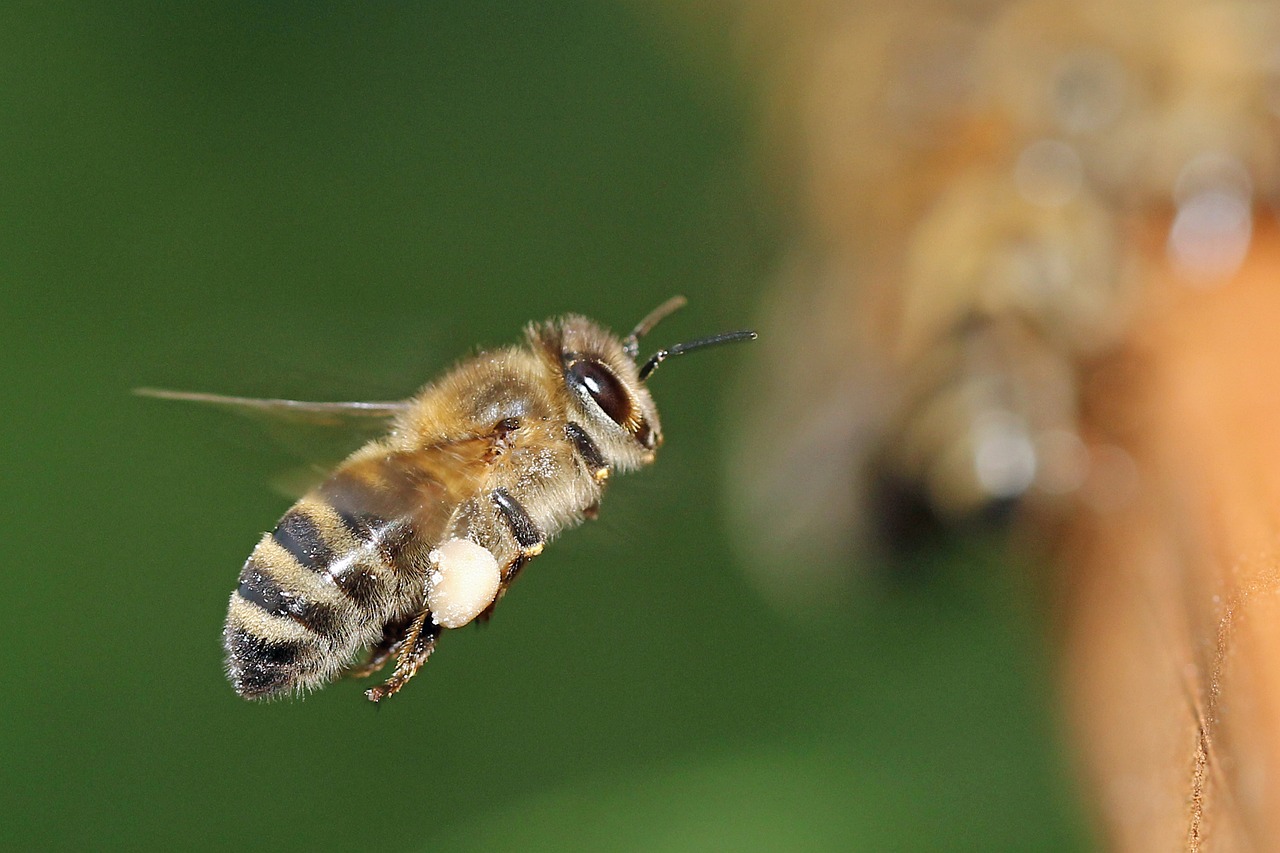
Online Learning Platforms
In today’s digital age, online learning platforms have become a treasure trove for aspiring beekeepers. They offer a wealth of resources that cater specifically to eco-friendly practices, making them an invaluable tool for beginners. Imagine having the ability to learn about beekeeping from the comfort of your own home, at your own pace, and with access to a community of like-minded individuals! It’s not just convenient; it’s a game-changer for anyone looking to dive into the world of sustainable beekeeping.
Many platforms provide interactive courses, video tutorials, and forums where you can ask questions and share experiences. For instance, sites like Udemy and Coursera offer specialized courses on beekeeping, focusing on organic methods and sustainable practices. You can learn everything from the basics of hive management to advanced techniques in pest control without ever needing to step outside. Isn’t that amazing?
Moreover, some websites are dedicated entirely to beekeeping, such as BeeKeepers.org and Beekeeping.com. These platforms often feature articles, webinars, and even live Q&A sessions with experts in the field. They cover a broad range of topics, including:
- The biology of bees and their behavior
- Best practices for maintaining healthy hives
- Eco-friendly pest management strategies
- Harvesting techniques that prioritize bee health
What’s more, many of these platforms also offer community forums where you can connect with fellow beekeepers. This sense of community is crucial, as it allows beginners to share their challenges and successes, fostering a supportive environment. It’s like having a mentor available 24/7! If you ever find yourself facing a dilemma with your bees, you can simply hop onto these forums, post your question, and receive advice from experienced beekeepers who have been in your shoes.
In addition, many online learning platforms provide downloadable resources, such as eBooks and guides, which can serve as handy references as you embark on your beekeeping journey. These materials often include checklists for hive management, seasonal guides, and troubleshooting tips that can help you navigate the ups and downs of beekeeping with confidence.
So, if you’re ready to take the plunge into eco-friendly beekeeping, don’t underestimate the power of online learning. With a plethora of resources at your fingertips, you can equip yourself with the knowledge and skills necessary to maintain healthy bee populations while supporting the environment. Remember, the journey of a thousand miles begins with a single step, and with these platforms, you’re already on your way!
Q1: What are some recommended online platforms for learning about eco-friendly beekeeping?
A1: Some popular platforms include Udemy, Coursera, BeeKeepers.org, and Beekeeping.com. Each offers a variety of courses and resources tailored to different aspects of beekeeping.
Q2: Can I learn beekeeping without prior experience?
A2: Absolutely! Many online courses are designed for beginners and will guide you through the basics of beekeeping, making it accessible for everyone.
Q3: Are there any costs associated with these online courses?
A3: While some platforms offer free resources, many courses may require a fee. However, the investment is often worth it for the quality of information and support you receive.
Q4: How can I connect with other beekeepers online?
A4: Most online learning platforms have community forums or discussion boards where you can interact with other learners and experienced beekeepers. Social media groups and local beekeeping associations also provide excellent networking opportunities.
Frequently Asked Questions
- What is eco-friendly beekeeping?
Eco-friendly beekeeping focuses on maintaining bee populations and their habitats while minimizing environmental impact. It involves practices that promote bee health, biodiversity, and sustainable agriculture.
- Why are bees important for the environment?
Bees play a crucial role in pollination, which is essential for the reproduction of many plants, including crops. Their work supports biodiversity and contributes to healthy ecosystems, making them vital for food production and ecological balance.
- What equipment do I need to start beekeeping?
Beginners should invest in basic equipment such as a beehive (like a top-bar or Langstroth hive), protective gear (suit and gloves), a smoker, and tools for hive inspection and honey extraction. Opting for eco-friendly options can help support bee health.
- How do I choose the right type of beehive?
Choosing the right beehive depends on your goals and preferences. Top-bar hives are great for beginners due to their simplicity and natural approach, while Langstroth hives are more common in commercial beekeeping. Consider factors like ease of management and environmental impact.
- What are some essential practices for sustainable beekeeping?
Key practices include organic pest management, habitat preservation, and ensuring a diverse food source for bees. These methods help maintain healthy colonies and contribute positively to the environment.
- How can I harvest honey sustainably?
Sustainable honey harvesting involves timing your extraction to avoid stressing the bees and ensuring that enough honey is left for their needs. Use gentle techniques and always prioritize the health of the colony over the quantity of honey harvested.
- What challenges might I face in eco-friendly beekeeping?
Common challenges include managing pests and diseases, fluctuating environmental conditions, and maintaining colony strength. Understanding these issues and employing eco-friendly solutions can help you overcome them effectively.
- How can I connect with other beekeepers?
Joining local beekeeping associations or online platforms can provide valuable networking opportunities. Engaging with experienced beekeepers offers insights, resources, and support for your eco-friendly beekeeping journey.



















